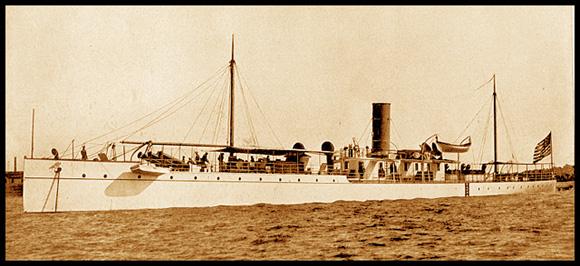
The US Navy is currently testing some potentially revolutionary new weapons, including electromagnetic rail guns. This is not the first time that the navy has experimented with new and exotic weapons systems, not all of which have been successful. USS Vesuvius, commissioned in 1890, featured three 15-inch (38-cm) cast iron pneumatic guns, which used compressed air to propel “dynamite shells.” The shells were steel or brass casings 7 feet long packed with nitrocellulose and nitroglycerine. The three dynamite guns had a range of between one to two miles depending on the weight of the charge. Oddly, the guns themselves were fixed, so to aim the projectiles they needed to aim the ship toward the target.
In 1897, USS Vesuvius saw action in the Spanish-American War engaging in eight bombardments against Santiago, Cuba. Admiral Sampson wrote that Vesuvius’ firing had “great effect.” Nevertheless, this was the first and last time that the Vesuvius’ dynamite gun would see combat. The relatively short range of the guns, the ship’s limited maneuverability and the likelihood that a single enemy shell concussion might set off the dynamite magazine limited her future service. In 1905, USS Vesuvius was recommissioned as a torpedo testing ship in Newport, RI. 1915, a torpedo fired from Vesuvius ran a circular course and punctured the hull. She was grounded to avoid sinking. In 1922, she was decommisioned and sold for scrap.

There are a number of funny gems in this post. The guns were fixed so they had to aim the ship towards the target? I wonder if that was a cost thing or what.
The idea that dynamite magazines are too volatile so that a single enemy shell could basically sink the ship. I mean, imagine aiming a little pea shooter at this thing and seeing a MASSIVE explosion.
And my personal favorite “…as a torpedo testing ship…a torpedo…ran a circular course and punctured the hull”. I guess that’s logged as a failure!